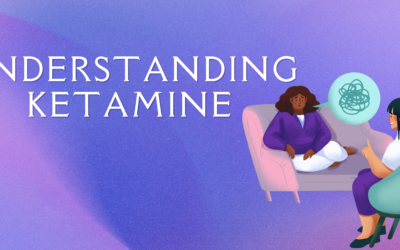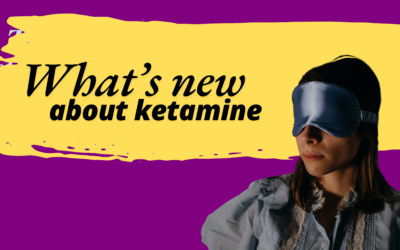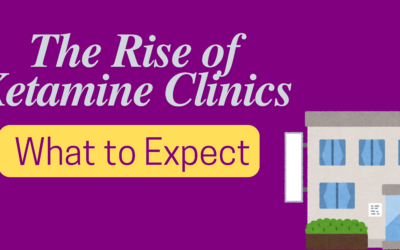Ketamine, originally developed as an anesthetic in the 1960s, has garnered significant attention in recent years for its potential benefits in treating various mental health conditions. This powerful drug, once primarily associated with recreational use and stigmatized by its “club drug” reputation, is now recognized for its rapid antidepressant effects and other therapeutic applications. This blog explores the evolving landscape of ketamine research, its mechanisms of action, its therapeutic potential, and the ongoing debates surrounding its use in clinical practice.
What Is Ketamine?
Ketamine is a dissociative anesthetic that works primarily through antagonism of the N-methyl-D-aspartate (NMDA) receptor in the brain, which plays a crucial role in synaptic plasticity and memory function. Initially used in surgical settings for its anesthetic properties, ketamine’s unique pharmacological profile has led researchers to investigate its efficacy in treating mood disorders, particularly major depressive disorder (MDD) and treatment-resistant depression (TRD).
How Does Ketamine Work?
Mechanism of Action
The way ketamine operates in the brain is complex and multifaceted. Unlike traditional antidepressants, which typically take weeks to exhibit therapeutic effects, ketamine can provide rapid relief from depressive symptoms, often within hours of administration. Key aspects of its mechanism include:
–NMDA Receptor Antagonism: By inhibiting NMDA receptors, ketamine increases levels of glutamate, the brain’s primary excitatory neurotransmitter. This increase triggers a series of events that promote synaptogenesis—the formation of new connections between neurons—resulting in enhanced neural communication and resilience against depressive symptoms.
– BDNF (Brain-Derived Neurotrophic Factor): Ketamine has been shown to elevate BDNF levels in the brain. BDNF is essential for neuron survival, growth, and differentiation. Enhanced BDNF signaling is linked to improved mood and cognitive function, suggesting that ketamine may help reverse neuroplasticity deficits seen in depression.
– AMPA Receptor Activation: The increase in glutamate also leads to greater activation of AMPA receptors, which enhances synaptic transmission and facilitates the release of other neurotrophic factors that support neuronal health and growth.
– Opioid Receptor Interaction: Emerging research suggests that ketamine’s effects on mood may also involve the mu-opioid receptor system. Some studies indicate that the analgesic properties of ketamine may play a role in its antidepressant effects, particularly in reducing emotional pain associated with depression.
Routes of Administration
Ketamine can be administered through various routes, including intravenous (IV), intranasal, and oral formulations. The most common clinical practice involves IV infusions, which allow for precise dosing and rapid onset of effects. The intranasal formulation, known as esketamine (Spravato), has also received FDA approval, providing a more accessible option for patients.
Research Developments
The resurgence of interest in ketamine has spurred numerous studies investigating its safety, efficacy, and long-term outcomes. Key findings from recent research include:
– Rapid Antidepressant Effects: Clinical trials have consistently demonstrated that ketamine can rapidly reduce suicidal ideation and improve depressive symptoms in patients with TRD. A landmark study published in 2017 found that a single infusion of ketamine resulted in significant reductions in depression scores within 24 hours, compared to placebo.
– Long-Term Efficacy: While the immediate effects of ketamine are widely recognized, questions remain about its long-term efficacy and optimal treatment protocols. Some research indicates that repeated doses may be necessary to maintain therapeutic benefits. Ongoing studies aim to determine the best frequency and duration of treatment, as well as the potential for combination therapies with traditional antidepressants.
– Safety Profile and Side Effects: Ketamine is generally well-tolerated, but side effects can occur. Common adverse effects include dissociative experiences, dizziness, nausea, and increased blood pressure. Concerns have also been raised regarding potential abuse and long-term effects on bladder health. Monitoring by healthcare professionals during and after treatment is crucial to mitigate risks.
Recent Research and Developments
Research on ketamine has accelerated over the past decade, highlighting its potential as a groundbreaking treatment option for various mental health issues:
1. Treatment-Resistant Depression (TRD): Numerous clinical trials have established that ketamine infusions can lead to significant reductions in depressive symptoms in individuals with TRD. The FDA approved esketamine, a nasal spray formulation of ketamine, for use in conjunction with oral antidepressants, representing a major advancement in mental health treatment.
2. Anxiety Disorders: Emerging studies suggest that ketamine may also be effective in treating anxiety disorders, including generalized anxiety disorder (GAD) and social anxiety disorder (SAD). Patients have reported significant improvements in anxiety symptoms following treatment.
3. Post-Traumatic Stress Disorder (PTSD): Preliminary research indicates that ketamine could be beneficial for individuals suffering from PTSD. Some studies show that ketamine may help patients process traumatic memories and reduce symptoms more effectively than traditional therapies.
4. Chronic Pain Management: Beyond mental health, ketamine is also being explored for its analgesic properties in chronic pain management, offering hope to patients who have not responded to conventional pain relief methods.
Safety and Considerations
While ketamine shows great promise, it is essential to approach its use with caution. Potential side effects can include dissociation, confusion, and elevated blood pressure. Long-term effects are still being studied, and there is a concern about the potential for abuse. Therefore, ketamine treatment should always be administered under professional supervision in a controlled environment.
Conclusion
The resurgence of interest in ketamine as a therapeutic tool marks a significant shift in our understanding of mental health treatment. As research continues to uncover the complexities of how ketamine affects the brain, it offers hope to those struggling with treatment-resistant conditions. With ongoing studies and growing knowledge, ketamine may become a cornerstone in the future of psychiatric care, paving the way for innovative approaches to mental health.
Understanding Ketamine
Understanding Ketamine: A Revolutionary Treatment for Depression and Beyond In recent years, ketamine has gained significant attention in the medical community, particularly for its promising applications in treating depression, anxiety, and other mental health...
Whats new about Ketamine
Once known primarily as an anesthetic and a party drug, ketamine is now gaining significant attention in the medical community for its potential therapeutic applications, particularly in treating mental health conditions. Recent research has focused on its effects on...
The Rise of Ketamine Clinics: What to Expect
In recent years, the medical landscape has witnessed a significant shift in the approach to mental health and pain management treatments. Amidst this transformative movement is the rapid rise of ketamine clinics. Once primarily known as an anesthetic, ketamine is now...




